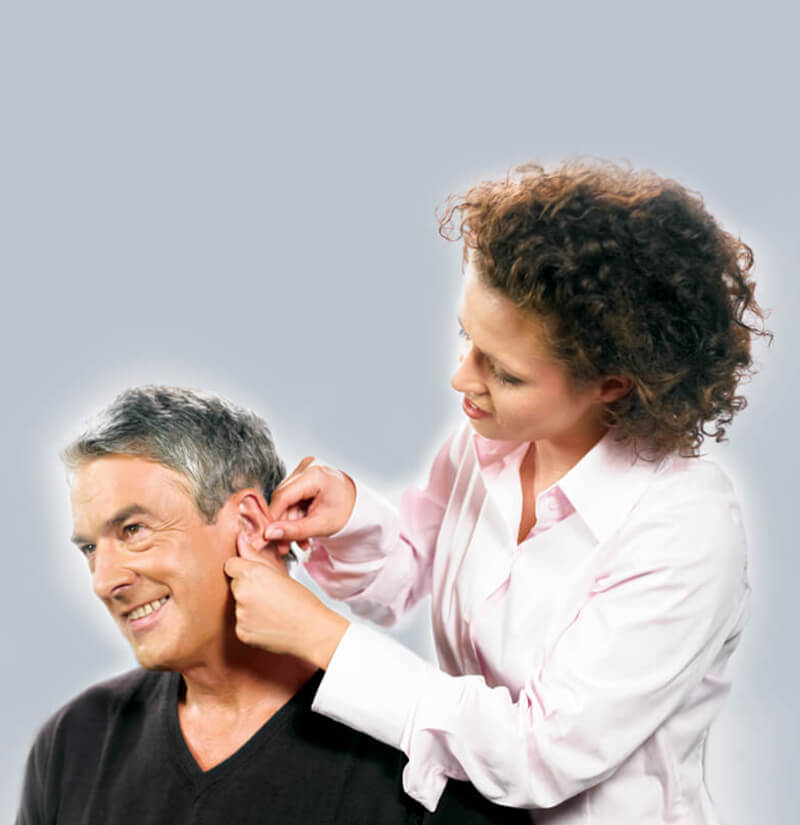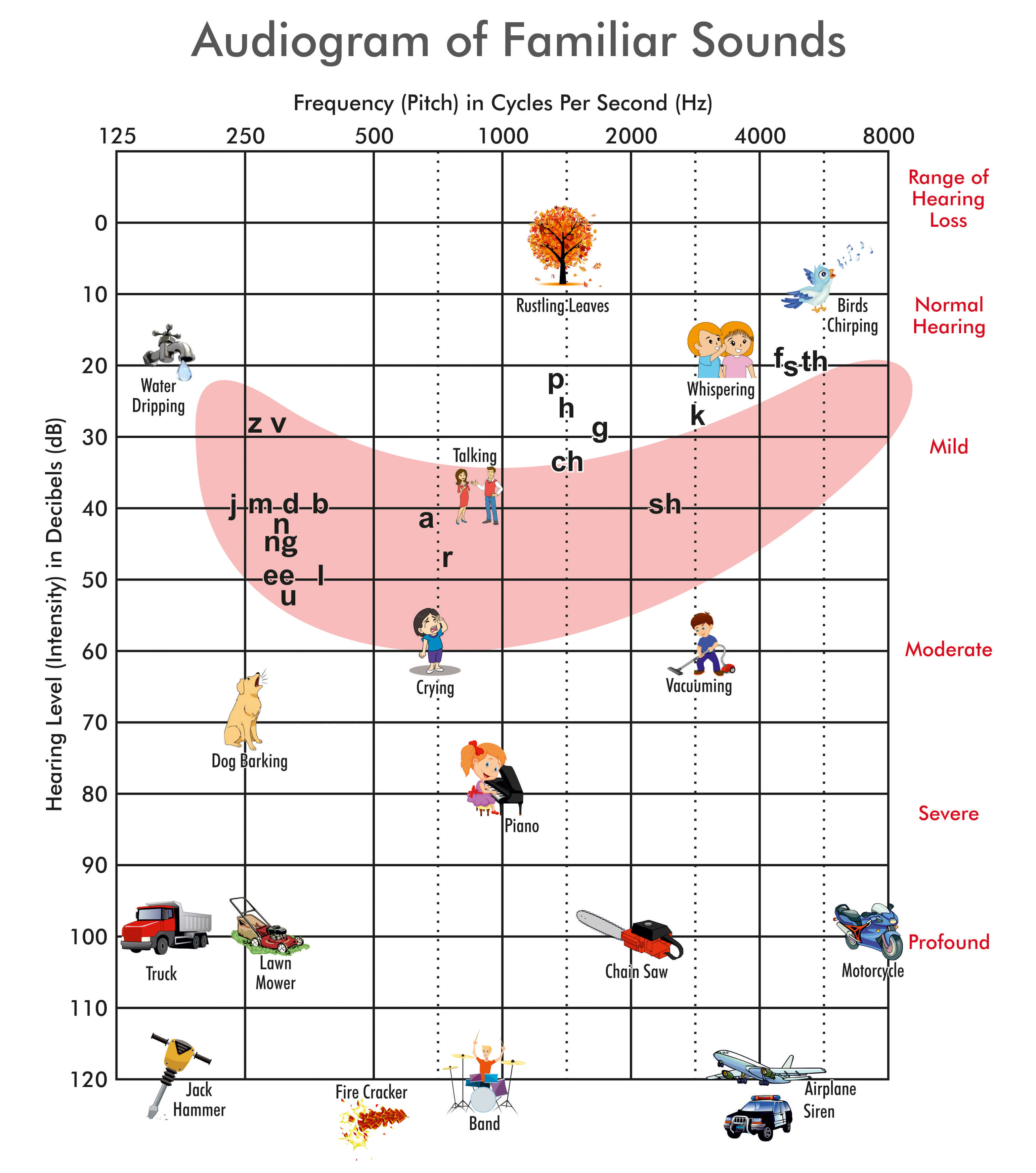





1. Sensorineural hearing loss occurs in the inner ear and is the most common type of hearing loss caused by damage to the inner ear and/or auditory nerve due to one episode or more of prolonged exposure to loud noise, certain medications or simply the process of aging. Once damaged, the inner ear cannot be repaired. Sensorineural hearing decreases the ability to differentiate consonant sounds (thus the fine distinctions in words such as hat versus cat). Most sensorineural hearing losses can be treated effectively with hearing aids.
2. Conductive hearing loss occurs in the outer and middle ear. The most common causes are wax build-up in the ear canal, middle ear infection, a hole in the tympanic membrane or damaged ossicles.
In most cases, conductive hearing loss affects the lower frequencies or pitches and makes it difficult to hear vowel sounds. Since vowels contain the "power of speech," the individual with conductive hearing loss perceives speech and other sounds as being much "quieter" than normal. The condition can often be medically treated.
3. Mixed hearing loss is a combination of a conductive and a sensorineural hearing loss.
The progression of hearing loss in most cases is subtle from a small amount of hearing loss to greater and greater loss. The implications vary depending on the degree of hearing loss.
May have problems in difficult listening situations such as in groups or in noise.
May need visual cues (to watch the speaker's face and especially lips) to understand some conversations and certain speakers.
May need to sit close to the speaker to understand the conversation.
If the problem is affecting the patient's ability to function normally in everyday life, they should probably consider amplification (hearing aid) if the hearing loss is not medically treatable.
Having difficulty understanding conversations on the telephone.
Having difficulty understanding one-on-one conversations.
People have to speak up for person to understand what is said.
The problem is affecting the patient's ability to function normally in everyday life and they should consider amplification if the hearing loss is not medically treatable.
Impossible to function in difficult listening situations such as in groups or in noise.
Impossible to understand conversations on the telephone.
Having difficulty understanding one-on-one conversations.
People have to speak up for person to understand even part of what is said.
Needs to sit close to the speaker to understand even part of the conversation.
Need visual cues (to watch the speaker's face and especially lips) to understand even part of any conversation and any speaker.
May have difficulty identifying loud environmental sounds (sirens, telephone ring, car horn, etc.) making safety a concern.
The problem is affecting the patient's ability to function normally in everyday life and they should consider amplification (hearing aid). If the hearing loss is medically treatable, it is most likely a mixed hearing loss and may require amplification post-medical treatment.
With Profound Hearing Loss, it is impossible to understand one-on-one conversations and the quality of the patient's speech is affected. The problem affects the ability to function normally in everday life. If the hearing loss is medically treatable, it must be a mixed hearing loss, and will likely require amplification (hearing aid) post medical treatment to detect speech.
